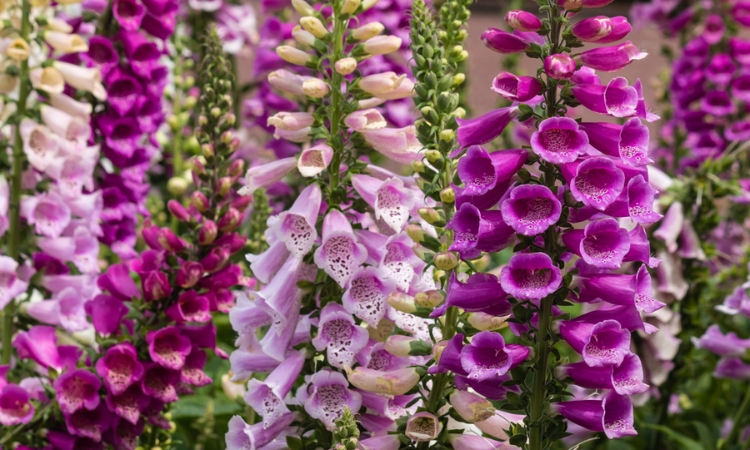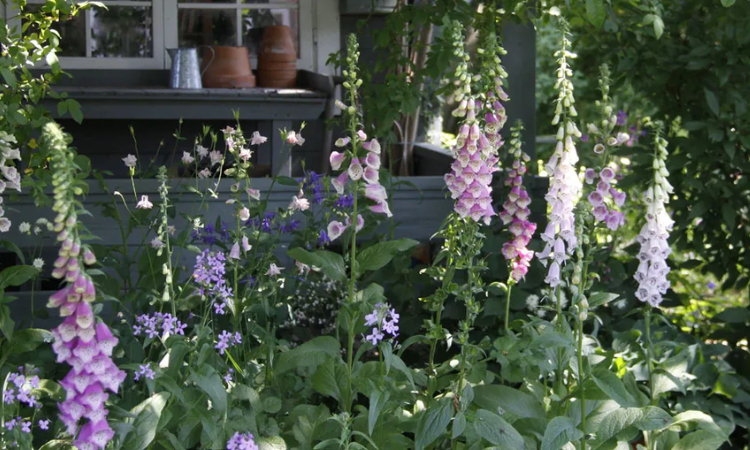How to Grow Foxgloves From Seed?: Greetings, fellow lovers of gardening! If you’ve ever been awed by the majestic spires of foxgloves blowing in the wind and wondered if you could grow them from seed, the answer is a resounding yes. In this piece, we’ll go over how to grow foxgloves from seed, a plant that may completely alter the look of your garden. Put on your gardening gloves, because we’re about to embark on an exciting new journey!
How to Choose the Best Foxglove Seeds?
Foxglove Varieties Under Study
There is a wide variety of foxgloves to choose from, from the more common Camelot series to the more eye-catching Digitalis purpurea. Choose a kind that works well with your outdoor space’s existing style and color palette. Every foxglove variety adds its own special flair to your garden.
Locating Good Seeds
Invest in high-quality seeds from reputable sources if you want your foxglove garden to thrive. Checking the material’s freshness and viability is crucial for ensuring successful germination. Keep in mind that the secret to a successful harvest is planting the right seeds.
Foxglove Seed-Sowing Method
The Optimal Time to Sow
Timing is everything when it comes to growing foxglove seeds. To allow the seeds a chance to feel the natural cycles of winter’s cold or early spring’s warmth, aim for late fall or early spring. This mimics environmental conditions plants would encounter in the wild, which improves germination rates.
Planting depth and soil aeration
Planting a foxglove is like planting the seeds of a fairy tale. Light is essential for the seeds to germinate, thus a light touch on the soil’s surface is all that’s needed. Maintain a healthy water flow and a high organic matter content in the soil. Foxgloves thrive in conditions ranging from slightly acidic to neutral pH.
Taking Care of Your Seedlings of Foxglove
Adequate Hydration
Maintain a consistently moist soil environment once your foxglove seeds have germinated. Foxgloves dislike having their roots moist, so create a balance between drainage and hydration. A light mist, like a refreshing rain shower, keeps them content and healthy.
Offering Safety and Help
Foxgloves, with their lofty flower spikes, may need support as they grow. To prevent excessive swaying in the wind, taller varieties should be anchored. Also, protect the delicate flowers from the strong winds.
How to Maintain Foxgloves Year-Round?
Maximizing Growth Through Pruning
Pruning is the key to developing bushy, full foxglove plants. Eliminate spent flowers to encourage continuous blooming and prevent the plant’s resources from going toward seed production. This periodic upkeep ensures continuous blooming throughout the growth season.
Keeping a Lookout for unwanted visitors
Look out for undesirable garden guests, such as snails or aphids. Foxgloves might be tough, but you still need to take precautions to make sure your flowers stay gorgeous. Introducing natural predators or using organic remedies can help maintain a balanced ecosystem.

Foxgloves in Full Bloom: a Pleasurable Sight
Appreciating the Beauty of Nature
When your foxgloves finally bloom, it’s a sight to behold. The beautiful, tubular flowers are a miracle of a vertical garden, attracting pollinators like hummingbirds and bees. Take time to appreciate how far your tiny seed has come.
Indoor Use Trimming
You may bring the beauty of your foxglove garden inside by cutting a few branches to use in vases. Their arching spires seamlessly take flowers from the garden to the house by imparting a dash of wild elegance.
Keeping the Foxglove Flame Alive
Saving Veggie Seeds for Next Year
You may want to save some of the seeds from your foxgloves as they mature and begin to produce fruit for use in subsequent growing seasons. Obtain the tiny seeds by waiting until a few flower spikes have matured and the pods have dried out. Foxgloves, if stored in a cool, dark place, will continue to work their magic for years to come.
Getting the word out about Foxglove
Share the joy by passing along your foxglove seeds or seedlings to other gardeners among your friends, family, and acquaintances. Several gardens can tell the story of foxgloves’ beauty by working together to cultivate this appealing flower.
Photos of Foxgloves from a Variety of Garden Settings
Foxgloves are a common sight in country
Foxgloves, with their innocent beauty, are at home in cottage gardens. Mix them in with other biennials and perennials for a creative yet grounded arrangement that will transport you to another world.
Foxgloves as decorative focal points
Foxgloves can serve as showpieces in your landscape. Set them in groups or alone against a lush background of vegetation. Their vertical grace captures the eye and gives any landscape an impression of polish.
Recognizing the Impermanence of Beauty
Foxgloves: A Brief Life History
The foxglove has a two-year life cycle because it is a biennial plant. Enjoy your yard while you can, from the time they’re just seedlings until they put on a show worthy of a garden in a magazine. Your backyard paradise will grow in beauty with each successive stage.
Foxglove’s Recollections: A Retrospective
Document the foxglove’s growth and development by snapping photos or keeping a garden journal. As the seasons change, take comfort in remembering their growth and the joy they brought to your community. Foxgloves may not last long, but the memories they inspire do.
In conclusion:
The story of beauty and charm written by foxgloves grown from seed in a garden is one worth telling. Keep in mind that you are doing more than just making a pretty garden by providing a haven for these fascinating flowers; you are also presenting a story about the wonders of nature.
The growth of your garden from seed to flower, the exchange of seeds, and the ever-evolving landscape all tell a story that will outlive you. Feel free to keep sharing your awe at foxgloves with others, and may these stunning flowers forever grace your garden. I hope your gardening ventures have been fruitful.
I hope you like the part where we talked about How to Grow Foxgloves From Seed? For more content like this, visit our website VariegatedPlantz.com.

